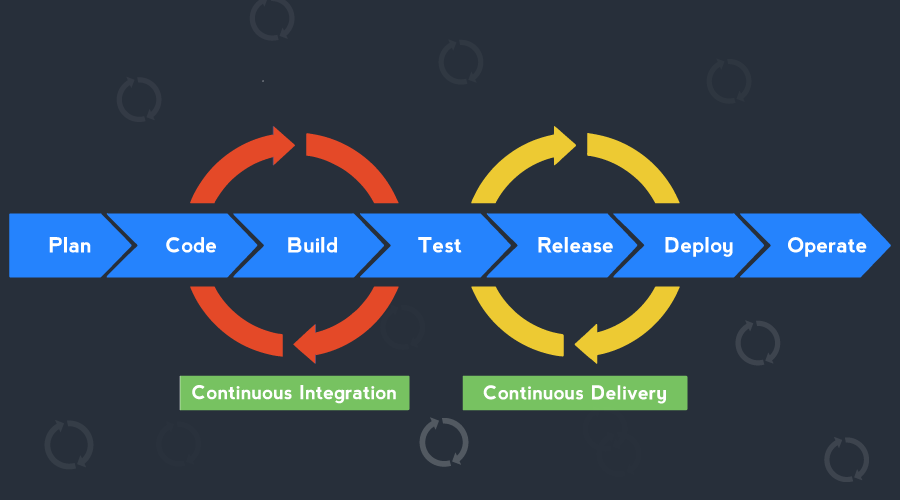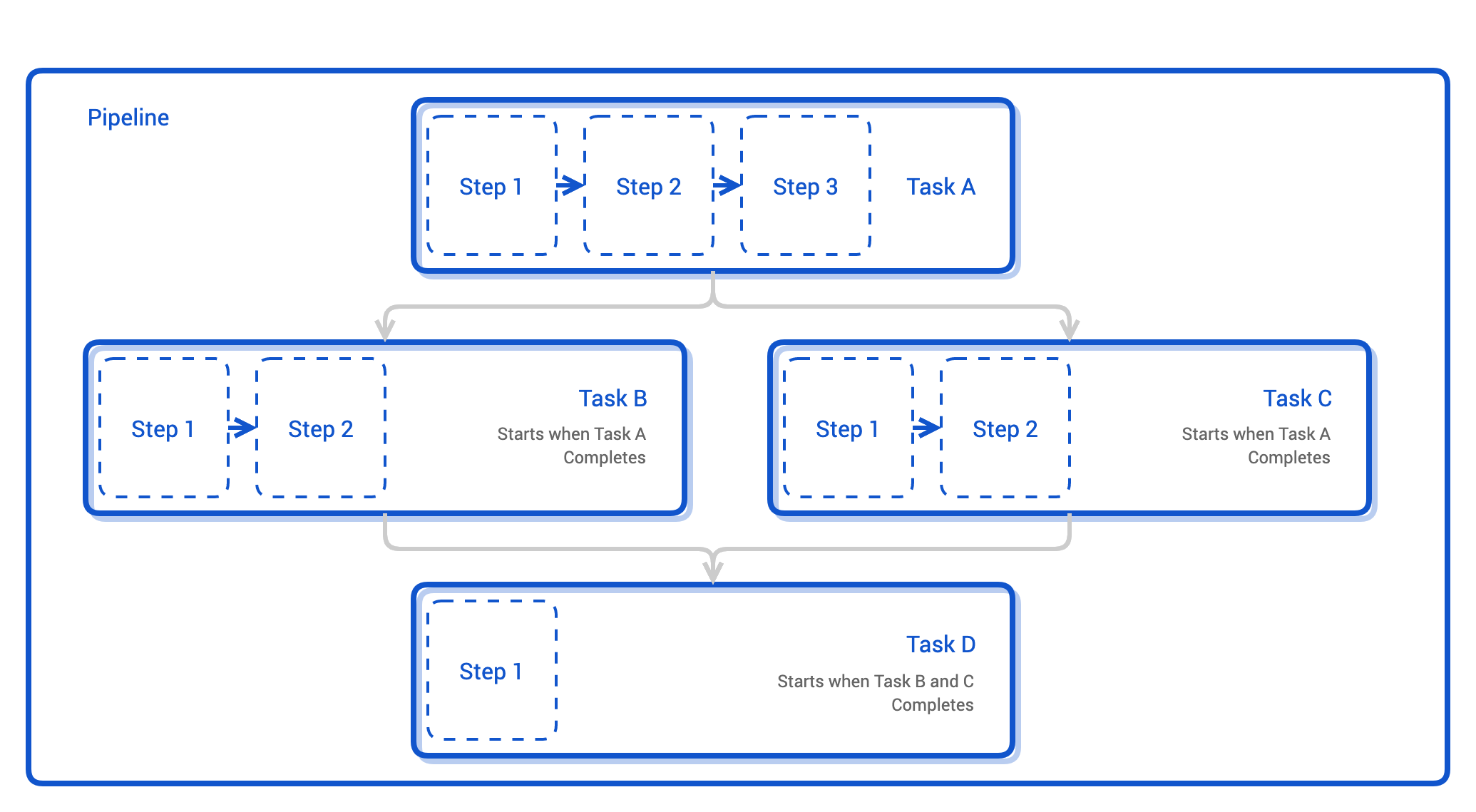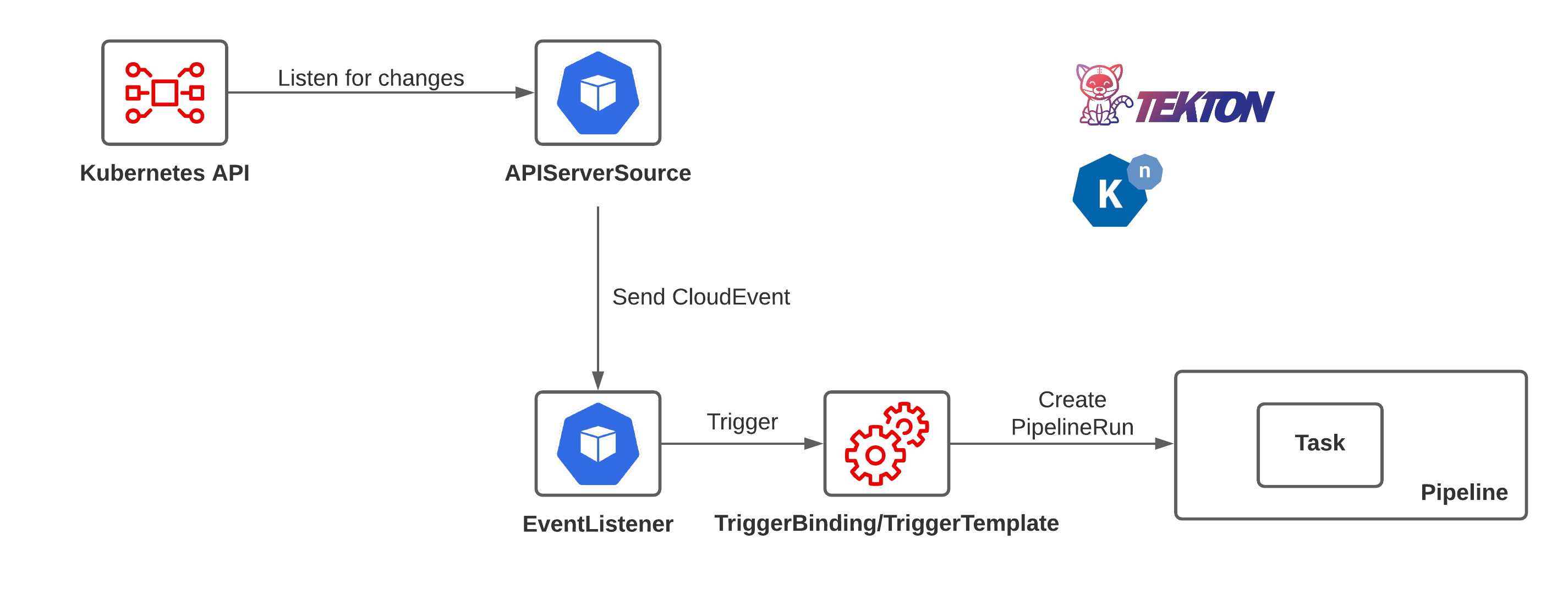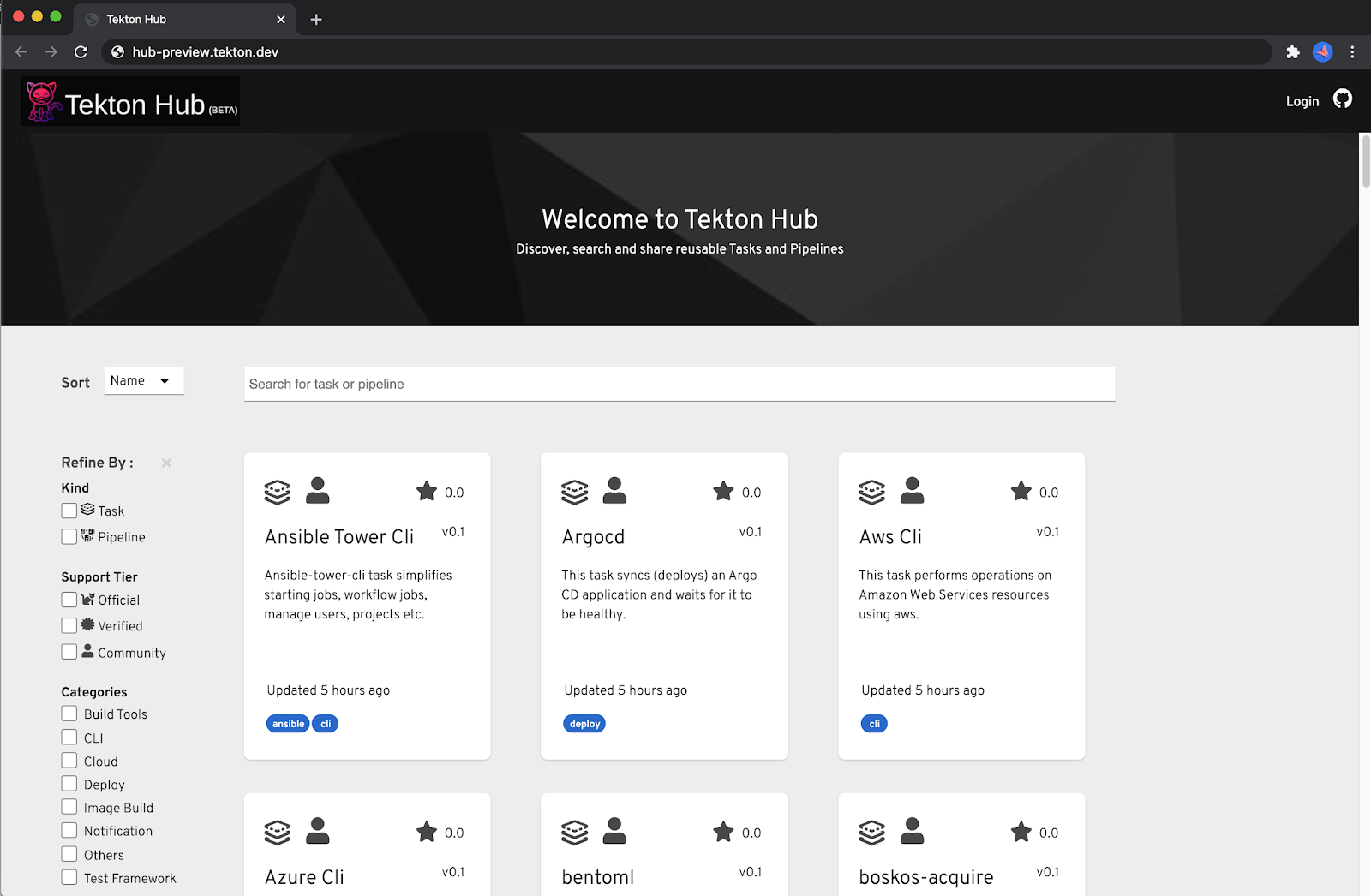Tekton: The Open Source, Kubernetes-native CI/CD Tools
Tekton is an open-source project that provides Kubernetes-style resources for declaring CI/CD-style pipelines.

Introduction
In the realm of software development, Continuous Integration/Continuous Deployment (CI/CD) has become a cornerstone of modern DevOps practices. As the ecosystem evolves, the need for innovative tools that can adeptly manage CI/CD pipelines is paramount. Enter Tekton – a flexible, Kubernetes-native, open-source framework designed to handle the nuances of CI/CD in a cloud-native world. This exploration of Tekton is not just a deep-dive into its functionalities, but a recognition of its increasing significance in today's tech landscape.
A Brief of CI/CD

CI/CD stands for Continuous Integration and Continuous Deployment – practices that automate the phases of software delivery, from integration and testing to deployment. These methodologies enable developers to merge changes more frequently, detect errors sooner, and ensure software products are always release-ready. With this context, we can better appreciate what Tekton brings to the table.
Introducing Tekton
Tekton is an open-source project that provides Kubernetes-style resources for declaring CI/CD-style pipelines. It’s a flexible framework that can be integrated into existing Kubernetes environments, extending their functionality by incorporating robust CI/CD capabilities.
What sets Tekton apart is its highly modular and scalable design. Pipelines are defined as a collection of tasks, which are made up of steps – each running in its own container. This granular approach provides tremendous flexibility, making Tekton an attractive solution for diverse CI/CD use cases.
Origin
Tekton was birthed out of the need for a unified, cloud-native CI/CD solution that can plug directly into Kubernetes. It's an offspring of the Knative project, originally designed to provide build primitives for serverless workloads. Over time, Tekton expanded beyond its parent, evolving into a stand-alone project tackling broader CI/CD challenges.
Since its inception, Tekton's capabilities have been progressively enriched. It has grown from a rudimentary pipeline tool to a comprehensive framework with custom resources for pipelines, tasks, and even event-based triggers.
The Tekton Paradigm
Tekton's main goal is to provide a versatile, standard way of running CI/CD processes in cloud-native environments. By offering a Kubernetes-native solution, it eliminates the need for separate CI/CD systems that may not fully leverage the Kubernetes API or its features, thereby creating seamless workflows.
Additionally, Tekton's composable, declarative syntax allows developers to piece together intricate pipelines with ease, facilitating better reproducibility and standardization across development, testing, and production environments.
Tekton's Architectural Components
One of the key strengths of Tekton is its modular and composable architecture. It’s designed around the concepts of Steps, Tasks, and Pipelines, which can be used to define and manage intricate CI/CD processes. Understanding these components can help us appreciate the flexibility and power Tekton provides.

Steps
Steps are the smallest configurable units in a Tekton Pipeline. Each Step corresponds to a specific command or script that needs to be executed. For instance, this could be a script to compile code, run tests, or deploy an application. Each Step is executed in its own container, ensuring isolation and repeatability across runs.
Tasks
Tasks are a collection of Steps that are executed sequentially in the order they are defined. Each Task is intended to perform a specific activity. For example, a Task could be designed to build a Docker image or deploy a Helm chart. Tasks are Kubernetes Custom Resource Definitions (CRDs), meaning they can be managed and manipulated using standard Kubernetes tools and practices.
Pipelines
Pipelines are a series of Tasks that are executed in a specified order, optionally with shared resources between them. Each Pipeline defines the flow of execution and manages dependencies between Tasks. Pipelines, like Tasks, are also Kubernetes CRDs, which allows them to be versioned, reused, and shared across teams.
Other components like PipelineResources and Triggers further extend Tekton's capabilities. PipelineResources define the artifacts (like Git repositories or Docker images) used as inputs or outputs of Tasks. Triggers, on the other hand, allow Pipelines to be initiated in response to events, providing a way to implement Continuous Delivery (CD) workflows.
Tekton's architecture is thus a testament to the principles of modularity and reusability. By breaking down CI/CD workflows into Steps, Tasks, and Pipelines, Tekton allows developers to create highly customizable and scalable CI/CD pipelines.
Tekton Triggers: Bridging the Gap Between Events and Pipelines

In the world of CI/CD, reacting to events such as code commits or pull requests is essential. This is where Tekton Triggers come into play. Triggers in Tekton allow CI/CD pipelines to be executed in response to specific events, adding an extra level of automation to the CI/CD process.
Triggers comprise several components that work together to realize this functionality:
EventListener
An EventListener is a Kubernetes custom resource that specifies a Kubernetes service to listen for events. When an event occurs, the service handles the event and performs actions as defined by the TriggerBindings and TriggerTemplates associated with the EventListener.

TriggerBinding
A TriggerBinding is a set of key-value pairs that extract data from the event payload and store them as parameters. These parameters can then be used in the TriggerTemplate to populate pipeline run specifications.
TriggerTemplate
A TriggerTemplate is a resource that specifies how to use the parameters from the TriggerBinding to create Tekton resources like PipelineRuns and TaskRuns. It essentially defines what action should be taken when an event is received.
One of the most common use cases for Triggers is to integrate with webhooks. Webhooks are a way for web applications to provide other applications with real-time information. For example, a Git webhook can notify your Tekton setup whenever code is pushed to a repository, a pull request is created, etc.
When Tekton is configured with a webhook, the associated EventListener service becomes the endpoint for the webhook. When an event occurs (for example, a new commit in your Git repository), the webhook sends an HTTP POST request to the EventListener with details about the event. The EventListener, using the associated TriggerBinding and TriggerTemplate, initiates the appropriate PipelineRun or TaskRun in response to the event, effectively automating the CI/CD process.
Thus, Tekton Triggers, by leveraging the concept of webhooks, offer an effective way to implement event-driven CI/CD workflows in a cloud-native environment.
Tekton Hub: A Library of Reusable Tasks
One of the notable features of the Tekton ecosystem is the Tekton Hub—an open-source project that serves as a repository for Tekton resources. It provides an extensive library of reusable Tasks and Pipelines that have been created and shared by the Tekton community.
Developers can leverage the Tekton Hub to find resources that meet their specific CI/CD needs. These resources can be directly installed and used in their Tekton pipelines, speeding up the pipeline creation process and promoting code reuse.

Each Task in the Tekton Hub comes with a predefined specification, detailing what the Task does, the inputs it requires, and the outputs it produces. These specifications adhere to the Tekton Task CRD (Custom Resource Definition), ensuring that they can be easily integrated into any Tekton pipeline.
The Tekton Hub also encourages the community to contribute their own Tasks, fostering an environment of collaboration and continuous improvement. Before a Task is included in the Tekton Hub, it goes through a thorough validation process to ensure that it adheres to certain quality standards. This gives users the assurance that the Tasks available in the Tekton Hub are reliable and effective.
With the Tekton Hub, the power of Tekton is multiplied. Not only can developers create their own custom pipelines, but they can also benefit from the collective knowledge and expertise of the Tekton community, reducing the time and effort required to set up and manage CI/CD pipelines.
Tekton vs. The Alternatives

Comparing Tekton with other CI/CD solutions like Jenkins, GitLab Runner, and GitHub Actions, illuminates its unique strengths.
Jenkins, a long-standing CI/CD solution, is known for its extensive plugin ecosystem. However, Tekton, with its cloud-native design, offers more scalability and higher resilience than Jenkins, which may struggle with larger, more complex workloads due to its monolithic architecture.
GitLab Runner and GitHub Actions, while robust and deeply integrated with their respective platforms, do not offer the same level of Kubernetes-native capabilities as Tekton. Tekton's seamless integration with Kubernetes makes it more flexible and adaptable to varying workflows.
Tekton’s ability to define and manage complex pipelines as code also sets it apart. While other tools support this to some extent, Tekton's Kubernetes-native design allows developers to use familiar Kubernetes syntax and concepts, enabling easier management and increased productivity.
| Features/Criteria | Tekton | Jenkins | GitLab CI/CD | GitHub Actions |
|---|---|---|---|---|
| Kubernetes Native | Yes | No | No | No |
| Language | YAML (Kubernetes based) | Groovy | YAML | YAML |
| Scalability | High (due to Kubernetes-native design) | Medium (can face issues with large-scale workloads) | High (with GitLab Runner) | High |
| Cloud-Native | Yes | Partially (with Jenkins X) | Yes (with Auto DevOps) | Yes |
| Integration | Deep integration with Kubernetes ecosystem | Broad integrations through plugins | Deep integration with GitLab platform | Deep integration with GitHub platform |
| Extensibility | High (Through Kubernetes CRDs) | High (through extensive plugin ecosystem) | Medium (through custom scripts and GitLab Runner) | Medium (through actions) |
| Ease of Use | Medium (Requires familiarity with Kubernetes) | High (Easy to set up and manage) | High (Especially within GitLab ecosystem) | High (Especially within GitHub ecosystem) |
| Triggers/Webhooks | Yes | Yes | Yes | Yes |
| Maintenance | Low (Managed by Kubernetes) | High (Self-managed, except for Cloud versions) | Low to Medium (Depends on self-managed or cloud version) | Low (Managed by GitHub) |
Future Forward
As the cloud-native landscape continues to evolve, Tekton is well-poised to adapt and grow. Its extensible design allows for continuous improvement and innovation. With growing community support and a strong alignment with Kubernetes and the cloud-native approach, Tekton is likely to remain a prominent player in the CI/CD space.
The potential influence of Tekton on future CI/CD trends and cloud-native development is substantial. By facilitating more efficient workflows and reducing the complexity of pipeline management, Tekton is paving the way for developers to focus more on writing great code and less on managing the tools that deliver it.
About 8grams
We are a small DevOps Consulting Firm that has a mission to empower businesses with modern DevOps practices and technologies, enabling them to achieve digital transformation, improve efficiency, and drive growth.
Ready to transform your IT Operations and Software Development processes? Let's join forces and create innovative solutions that drive your business forward.
Subscribe to our newsletter for cutting-edge DevOps practices, tips, and insights delivered straight to your inbox!
